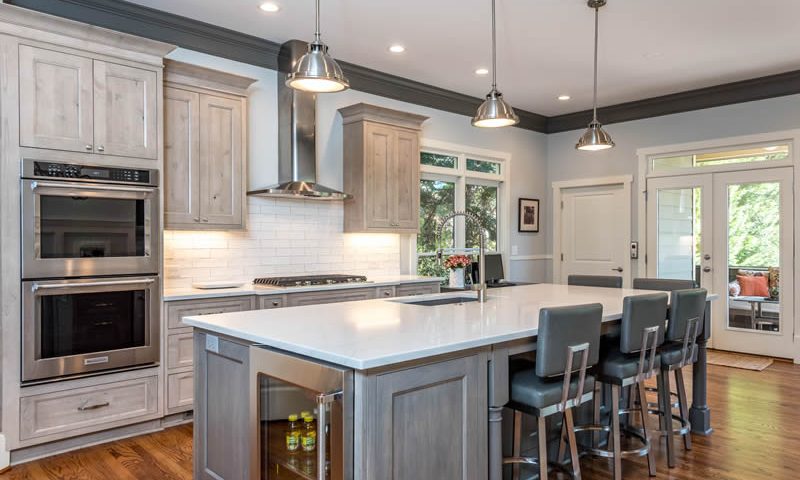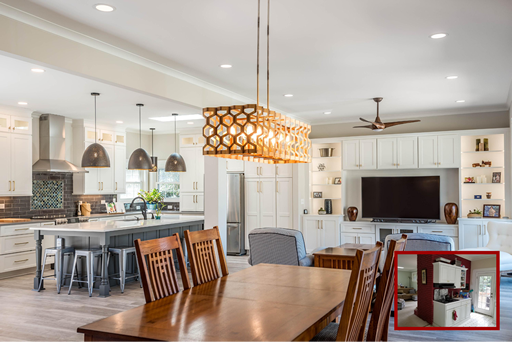Elevate Your Home’s Accessibility

The Importance of a Business License
May 15, 2019
Brighten Your Home This Spring
April 20, 2020As we get older, physical accessibility throughout a multi-story home can become a problem, especially if you also have to cope with an injury or surgery. Instead of considering a difficult (and costly) move to a single-story house, an in-home elevator might be the perfect solution; in fact, more homeowners are considering residential elevators a viable option to increase accessibility in their home.
Harbour Towne Construction would love to help make your life easier and more accessible, so consider these few options, such as cost, timing, and elevator style, before giving us a call.
Budget
First and foremost, having a residential elevator can be a lifesaver when you feel restricted in your own home, but it may not seem to be the most cost effective option for some families. Elevators themselves can run anywhere from $15,000 to $50,000, which doesn’t include installation or building a shaft. Furthermore, cost can even vary based on the number of floors in the home. The good news is that elevators have a wide variety of pricing, dependent on the type.
Needed Available Space
Many homeowners, when wanting to install an elevator, should take the time to consider the amount of space that is needed for not only the elevator shaft, but also for the mechanical equipment needed to run the lift. For example, because of the space required, traditional elevators systems can limit its location; however, many other types of elevators are more space-friendly.
Construction and Installation Time
Comfort is at the top of the list of many homeowners and tend to find the process invasive. Additionally, the renovation may lead to more expenses due to unforeseen complications. When exactly do you foresee needing to increase in your home’s accessibility and how you can adjust our living around construction to be as comfortable as possible? Any homeowner should determine the beginning to the project, as well as the rest of your timeline.
Types of Elevators and Lifts
Cable-Driven Elevator
One of the most well known elevators, largely used in commercial buildings, cable-driven elevators are operated by cable wound around a drum and have a range of complexities and space requirements. These elevators require a shaft and a machine room in order to operate. They are the most cost-effective option and can be easily added into existing homes with small modifications.
Chain-Driven Elevator
Similarly, a chain-driven elevator is operated by a chain wound around a drum. Because of chain over cable, these elevators are more durable and require less maintenance. They also do not require a machine room and, therefore, save space within the home.
Hydraulic Elevator
These elevators are powered by a piston that travels inside a cylinder, which is then pumped with oil to control the elevator. Although hydraulic elevators do not require separate machine room, they do require a pit dug below the shaft. Based on the existing home’s structure, digging this pit varies in cost; however, because of the simple shaft structure, they are easily fitted into an existing home.
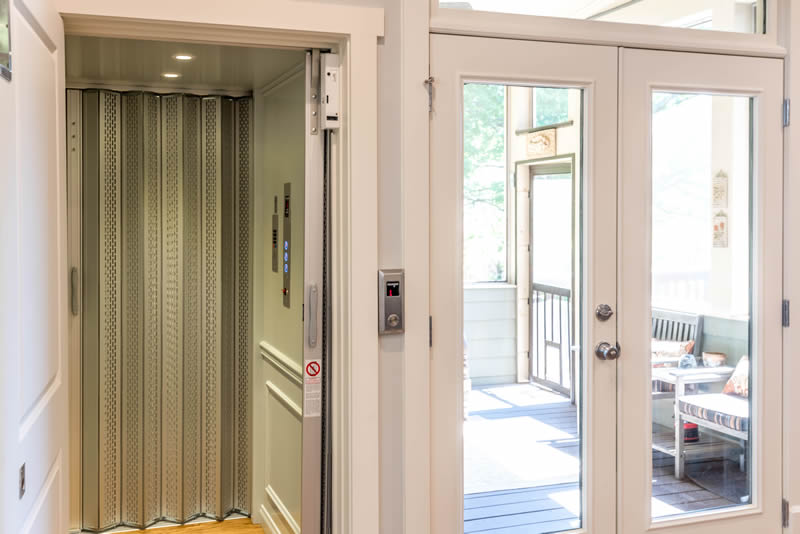
This residential elevator fits seamlessly into the kitchen without compromising aesthetic or functionality.
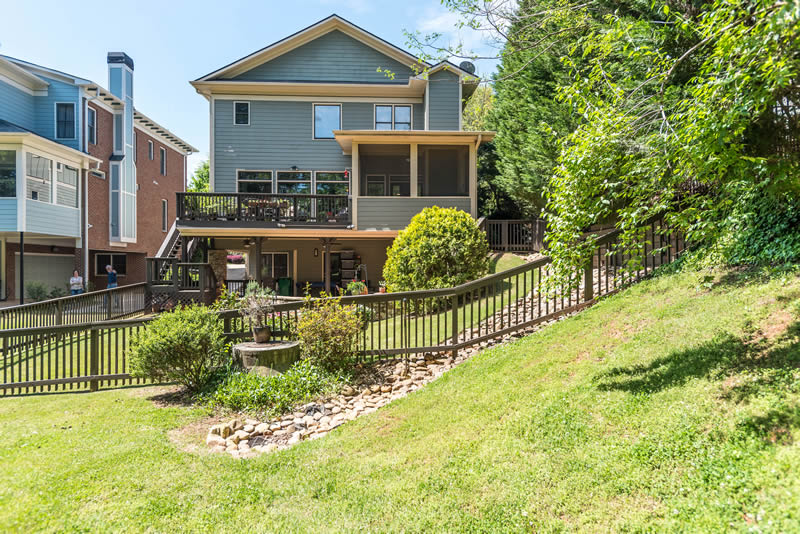
Harbour Towne Construction was able to add a residential elevator and shaft along the back of this house. adding to the properties value and the accessibility of the home.
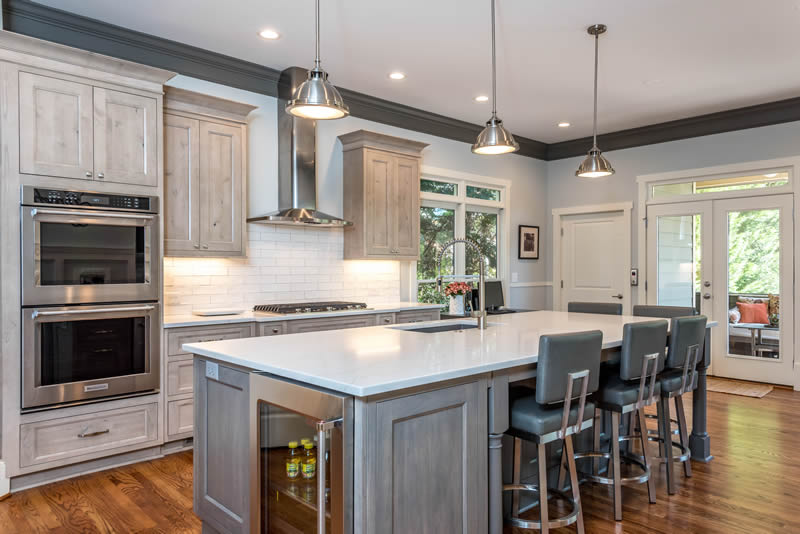
With the door closed, no visitor would be able to tell that an elevator had been installed.
Resale Value
Adding an elevator in your home will not only make your home more desirable to buyers interested in luxury amenities, but it will also give you an advantage to buyers who are looking for homes that offer additional accessibility. Your homes’ resale value is sure to benefit from such an additionIf you are interested in adding an elevator into your home or have more questions about how to begin the process, please reach out to us at Harbour Towne Construction at (770) 455-1930 to talk with the most experienced remodelers in the industry. Harbour Town has experience retrofitting elevators into homes, making the homeowner's lives easier and their homes more accessible.
As we get older, physical accessibility throughout a multi-story home can become a problem, especially if you also have to cope with an injury or surgery. Instead of considering a difficult (and costly) move to a single-story house, an in-home elevator might be the perfect solution; in fact, more homeowners are considering residential elevators a viable option to increase accessibility in their home.
Harbour Towne Construction would love to help make your life easier and more accessible, so consider these few options, such as cost, timing, and elevator style, before giving us a call.
Budget
First and foremost, having a residential elevator can be a lifesaver when you feel restricted in your own home, but it may not seem to be the most cost effective option for some families. Elevators themselves can run anywhere from $15,000 to $50,000, which doesn’t include installation or building a shaft. Furthermore, cost can even vary based on the number of floors in the home. The good news is that elevators have a wide variety of pricing, dependent on the type.
Needed Available Space
Many homeowners, when wanting to install an elevator, should take the time to consider the amount of space that is needed for not only the elevator shaft, but also for the mechanical equipment needed to run the lift. For example, because of the space required, traditional elevators systems can limit its location; however, many other types of elevators are more space-friendly.
Construction and Installation Time
Comfort is at the top of the list of many homeowners and tend to find the process invasive. Additionally, the renovation may lead to more expenses due to unforeseen complications. When exactly do you foresee needing to increase in your home’s accessibility and how you can adjust our living around construction to be as comfortable as possible? Any homeowner should determine the beginning to the project, as well as the rest of your timeline.
Types of Elevators and Lifts
Cable-Driven Elevator
One of the most well known elevators, largely used in commercial buildings, cable-driven elevators are operated by cable wound around a drum and have a range of complexities and space requirements. These elevators require a shaft and a machine room in order to operate. They are the most cost-effective option and can be easily added into existing homes with small modifications.
Chain-Driven Elevator
Similarly, a chain-driven elevator is operated by a chain wound around a drum. Because of chain over cable, these elevators are more durable and require less maintenance. They also do not require a machine room and, therefore, save space within the home.
Hydraulic Elevator
These elevators are powered by a piston that travels inside a cylinder, which is then pumped with oil to control the elevator. Although hydraulic elevators do not require separate machine room, they do require a pit dug below the shaft. Based on the existing home’s structure, digging this pit varies in cost; however, because of the simple shaft structure, they are easily fitted into an existing home.


